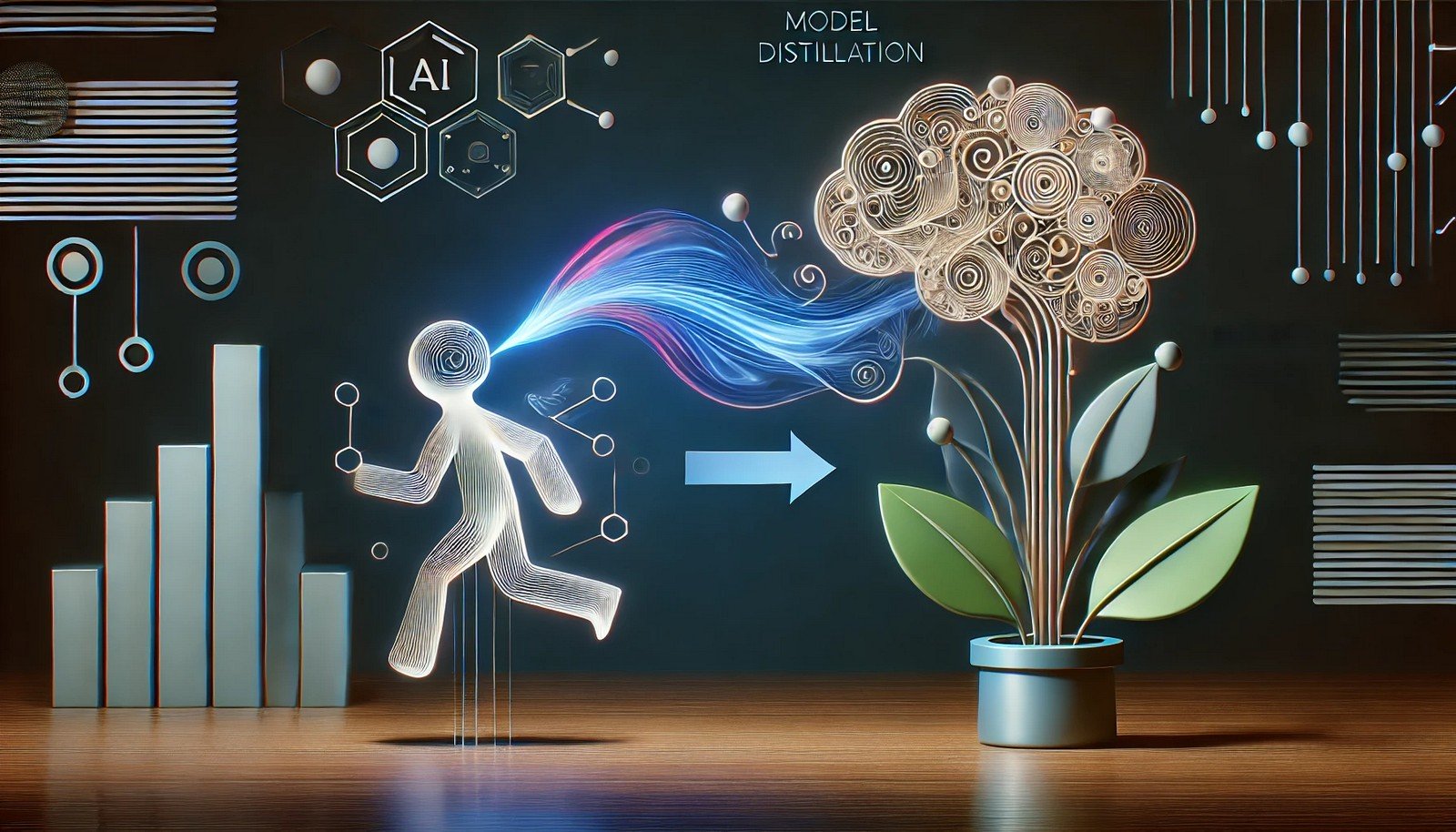Model Distillation

Quick Navigation:
- Model Distillation Definition
- Model Distillation Explained Easy
- Model Distillation Origin
- Model Distillation Etymology
- Model Distillation Usage Trends
- Model Distillation Usage
- Model Distillation Examples in Context
- Model Distillation FAQ
- Model Distillation Related Words
Model Distillation Definition
Model Distillation is a machine learning technique where a smaller model, called the "student model," is trained to imitate a larger, more complex model, known as the "teacher model." By learning from the outputs of the teacher, the student model replicates the teacher's knowledge and behavior in a more resource-efficient manner. This method enables the creation of lightweight, fast, and deployable models that retain a high degree of accuracy, making them ideal for mobile devices and real-time applications. Distillation helps reduce computational costs and energy consumption, addressing a key challenge in deploying AI models at scale.
Model Distillation Explained Easy
Imagine a big, wise teacher who knows a lot about a subject. The teacher explains things in a way that a young student can understand and remember. Through practice, the student learns to give answers similar to the teacher’s without needing to know everything the teacher knows. Model Distillation works the same way in AI – a large model (teacher) trains a smaller model (student) to perform well without needing all the complex information the teacher has.
Model Distillation Origin
The concept of model distillation was first popularized by researchers at Google and other leading AI organizations as they sought to make complex neural network models more accessible for devices with limited computing power. It has since become a widely adopted technique across the AI industry.
Model Distillation Etymology
"Distillation" in this context draws on the concept of distilling or concentrating knowledge from a larger source into a smaller, manageable format, mirroring the way liquids are distilled to remove impurities or unnecessary parts.
Model Distillation Usage Trends
Over recent years, model distillation has gained prominence as AI and machine learning applications expand into mobile devices, edge computing, and Internet of Things (IoT) platforms. Companies prioritize distillation techniques to achieve cost-effective, energy-efficient models that remain highly accurate, aligning with industry-wide goals to make AI scalable and environmentally sustainable.
Model Distillation Usage
- Formal/Technical Tagging:
- Machine Learning
- Neural Network Compression
- Knowledge Transfer - Typical Collocations:
- "model distillation technique"
- "teacher-student model framework"
- "knowledge transfer via distillation"
- "efficient model distillation for mobile AI"
Model Distillation Examples in Context
- Model distillation allows a smartphone app to use a small, efficient AI model that can run in real-time without draining the battery.
- By using model distillation, autonomous vehicles can operate with faster, compact models that still make accurate real-time decisions.
- In finance, model distillation is used to deploy lightweight predictive models on client devices, offering fast and accurate forecasts without needing high-powered servers.
Model Distillation FAQ
- What is model distillation?
Model distillation is a technique where a small model learns from a larger, trained model to perform a task with similar accuracy but less complexity. - Why is model distillation important?
It enables AI models to operate efficiently on devices with limited resources, making AI accessible in mobile and embedded systems. - How does model distillation work?
A smaller model, or "student," learns from a larger "teacher" model by imitating its outputs, making the student capable without full complexity. - What are common applications of model distillation?
Model distillation is used in mobile applications, IoT devices, autonomous vehicles, and other resource-constrained environments. - Who developed model distillation?
Leading researchers, notably from Google, advanced the concept to make large neural networks more accessible for low-power devices. - Can model distillation improve speed?
Yes, by creating smaller models, distillation improves processing speed and reduces energy consumption. - Is model distillation suitable for neural networks only?
While popular for neural networks, distillation can also be applied in other machine learning frameworks where model simplification is needed. - Does model distillation reduce model accuracy?
It often maintains a high level of accuracy but may lose some precision compared to the full teacher model. - What are some alternatives to model distillation?
Pruning and quantization are other methods to reduce model size but with different trade-offs. - How does model distillation impact AI scalability?
By reducing resource requirements, distillation allows AI applications to scale across various devices, especially those with limited hardware.
Model Distillation Related Words
- Categories/Topics:
- Neural Network Optimization
- AI Scalability
- Edge Computing
Did you know?
Model distillation played a significant role in advancing AI applications in edge computing, allowing devices with minimal processing power, such as wearable fitness trackers, to utilize sophisticated AI for health monitoring without needing cloud connections.
PicDictionary.com is an online dictionary in pictures. If you have questions or suggestions, please reach out to us on WhatsApp or Twitter.Authors | Arjun Vishnu | @ArjunAndVishnu

I am Vishnu. I like AI, Linux, Single Board Computers, and Cloud Computing. I create the web & video content, and I also write for popular websites.
My younger brother, Arjun handles image & video editing. Together, we run a YouTube Channel that's focused on reviewing gadgets and explaining technology.



Comments powered by CComment